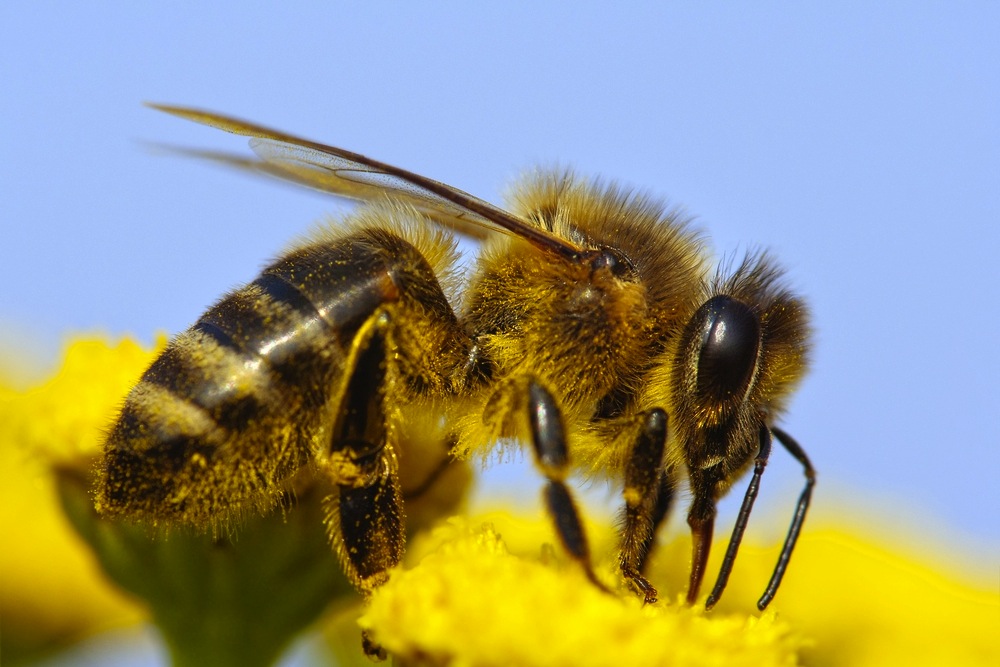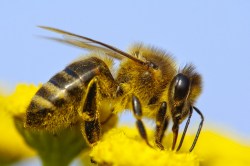Even as bees drop dead around the world after sucking down pesticide-laced nectar, pesticide makers are touting their investments in bee research.
Nearly a third of commercial honeybee colonies in U.S. were wiped out last year, for a complicated array of reasons, scientists say: disease, stress, poor nutrition, mite infestations, and — yes — pesticides. Neonicotinoid pesticides seem to be particularly damaging to bees, so much so that the European Union is moving to ban them (but the U.S. is not).
Now the two main manufacturers of neonicotinoids, Bayer CropScience and Syngenta, are promoting their commitments to bee health, as is agro-giant Monsanto. From a feature story in the St. Louis Post Dispatch:
Monsanto Co., which two years ago bought an Israeli bee research company, hosts an industry conference on bee health at its headquarters in Creve Coeur this month. Bayer CropScience is building a 5,500-square-foot “bee health center” in North Carolina, and with fellow chemical giant, Syngenta, has developed a “comprehensive action plan” for bee health.
“The beekeeping industry has always crawled on its hands and knees to USDA and universities, begging for help,” said Jerry Hayes, a bee industry veteran recently hired by Monsanto to run its bee research efforts. “Now we have this very large company involved that knows how important bees are to agriculture.”
With a very large company involved, the bees are as good as saved, right?
Not surprisingly, the industry is downplaying the role of insecticides in bee deaths.
For example, Iain Kelly of Bayer CropScience does a suspiciously incomplete job of explaining the scary plight of bees during an interview with North Carolina Public Radio about the company’s new bee research center:
Kelly … says other insects and diseases are invading much of the bee’s natural habitat.
“They have real problems now with pests and pathogens, including viruses and fungal diseases,” Kelly says.
“We’ve lost a lot of the natural foliage for them as well, which is a big concern to beekeepers.”
Yeah, we know, this is a multi-faceted problem. But what about the pesticides? More on that from the Post-Dispatch:
Published last year, a study by Purdue University found that dead bees that had foraged in and around corn fields contained high levels of neonicotinoid compounds. The study was prompted by massive bee die-offs that happened in the spring, when corn planters were spewing neonicotinoid-containing dust.
“I know, definitively, that there’s a relationship between treated seed and spring die-offs,” said Christian Krupke, the study’s lead author. “It (neonicotinoids) blows out behind the planter and gets in the air, it lands on dandelions. It lands on the bees, even.”
While Krupke says there’s no direct link between neonicotinoids and Colony Collapse Disorder, he said, “anything that’s a stressor to bees is a concern now. We know they’re weaker because of it.”
The industry, however, flatly denies any link between bee health and the neonicotinoids it produces.
“There’s no scientific evidence linking neonics with bee health — period,” said Dave Fischer, director of environmental toxicity and risk assessment at Bayer CropScience.
Perhaps pesticide makers are hoping their happy PR buzz will distract us from the missing buzz of these critical pollinators.




